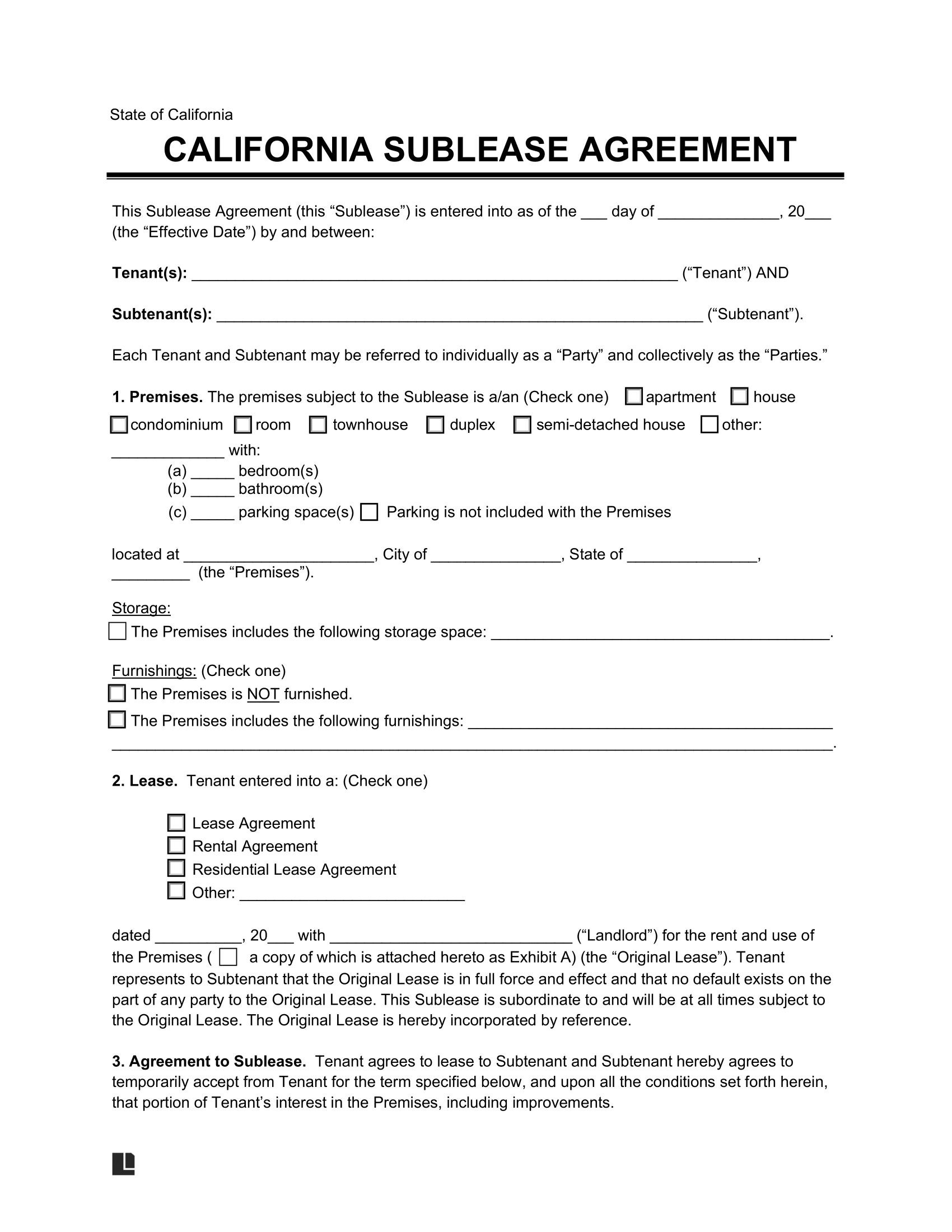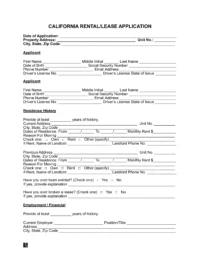A California sublease agreement allows you (the tenant) to rent out all or a portion of the property you’re renting to another person who wasn’t a part of the original lease. You should check your original lease agreement to see if you can sublet your apartment.
The new tenant (known as the “subtenant” or “sublessee”) has to honor the terms of the sublease agreement (as well as the original lease) and follow all state laws regarding the eviction process, security deposits, and all other landlord-tenant matters.
Laws & Requirements
Sublease and Assignment Provision Laws: California Civil Code – CIV § 1995.010-270.
Landlord-Tenant Laws: California Civil Code – CIV § 1940-1954.06.
Security Deposit Obligations: Sublessors must return the security deposit within 21 days of the end of the sublease.
Notices: In California, sublessors must give their subtenants three days’ written notice to pay rent or leave. Depending on whether the subtenant has lived at the rental for under one year or over one year, a sublessor also needs to provide 30 or 60 days written notice of the intent not to renew the sublease and/or original lease.
Permission to Sublet
Subletting in the state typically requires your landlord’s written consent.
- Laws: If your original lease does not prohibit subletting, you can assume it is allowed (CIV § 1995.210-270).
- Explicit Written Consent: If your lease restricts subletting, you cannot sublet unless you obtain written approval from your landlord.
- Landlord’s Right to Reject: If the lease outlines standards for obtaining consent to sublease, landlords can refuse based on those standards. Without specified standards, landlords must not unreasonably withhold consent for subleasing.
Tax Obligations
Lodgings Tax
- Subletting for less than 30 continuous days subjects a tenant to California’s TOT – Transient Occupant Tax (CA SB60).
- Tax collection occurs at city and county levels, not at the state level.
Tax Rates by County
- The California State Controller provides TOT data for all counties and cities.
- The tax varies between 8% and 15.5%, but it’s advisable to verify county charges for accuracy and up-to-date information.
Filing Frequency
- Tax returns must be filed with the local tax jurisdiction, with due dates varying by location.
- Even if no rental income is earned during a filing period, filing “zero dollar returns” may still be required, and late filing may result in penalties, interest payments, or legal action by tax authorities.
Making Payments
- Short-term rentals must be registered with state tax authorities before collecting lodging taxes, with registration typically available online.
- Taxpayers should be aware of state and local regulations regarding transient occupancy tax, tax rates, taxable charges, exemptions, and responsibilities regarding tax collection and remittance, including situations where taxes are collected by rental marketplaces.
Sample

Related Documents
Rental Application
Allows a landlords to vet any applicant before offering a lease.

